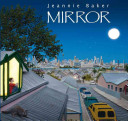by Kathy Short, University of Arizona, Tucson, AZ
 One of the lessons that I have learned as a reader of global literature is to never read a book by itself–to always read a book alongside other books. Over and over, I find that our interpretations and connections change dramatically when we read paired books or read a book within a larger text set or collection. Throughout the next month, my blogs will focus on my experiences of reading books alongside each other, most recently within a graduate course on global literature.
One of the lessons that I have learned as a reader of global literature is to never read a book by itself–to always read a book alongside other books. Over and over, I find that our interpretations and connections change dramatically when we read paired books or read a book within a larger text set or collection. Throughout the next month, my blogs will focus on my experiences of reading books alongside each other, most recently within a graduate course on global literature.
This blog focuses on an example of how our perspectives on a book can change dramatically when we read it within a broader collection. Mirror, written and illustrated by Jeannie Baker (2010), is an Australian picture book that is receiving enthusiastic reviews as visually stunning with a thoughtful message of global interdependence. As an individual piece of literature, this picture book is exemplary and deserving of awards and recognition as an aesthetic masterpiece. When considered within the political structures of our society and the broader collection of children’s books, however, the book is problematic and raises provocative questions about the responsibilities of authors, reviewers, and readers.
The book opens to side-by-side wordless books so that two stories are viewed simultaneously in following the lives of two families on a day of shopping, one in rural Morocco and the other in Sydney, Australia. The strikingly different lifestyles and landscapes provide a context in which the reader comes to recognize the connections across families and the ways in which they are the mirror of each other. The richly detailed collage illustrations use color and texture to highlight global connections. The author sees the book as a celebration of difference and diversity and a glimpse into the common humanity that connects us as human beings.
Sounds like a great book, and it is. In addition, the book appears to be culturally authentic in the portrayal of life in rural Morocco, beyond a problematic referral to the stereotype of flying carpets within Arabic culture. So what’s the problem?
The issue is representation, in particular the author’s decision to contrast rural isolated Morocco with modern urban Australia. Because the two countries are not equal in their economic or political capital, this unfair comparison perpetuates the hierarchy of modern developed Western nations in contrast to the poverty and traditional ways of living in the Middle East and North Africa. Also, by emphasizing the message that we are all alike on the inside, the danger exists that we overlook the deeper ideologies that affect the distribution of power in society. A message of racial and global harmony is important but should not come at the expense of also recognizing the inequity that exists within society.
Another issue is that picture books set in North Africa and the Middle East overwhelming show rural isolated villages with lots of camels and sand. Over and over, children in Western cultures are shown images of this part of the world as set back in time with few modern conveniences. Although there are rural remote villages, there are also modern cities with large stores, cars, trucks, and the latest technology. The problem is the almost total absence of modern city life from the larger body of picture books set in this part of the world. The issue is not cultural authenticity, but the lack of diversity in the representations and images of life.
This book has caused a great deal of conflict for me as a reader and a critic. As an individual piece of literature, I consider the book exemplary in design and illustration with a heart-warming and thoughtful message by a gifted and well-intentioned author. In critiquing the book, I worry about becoming one of those critics who always finds something negative and delights in destroying books. On the other hand, books do not stand alone and we cannot act as if children’s literature is not political. When read alongside the broader collection of children’s books on this part of the world, this book perpetuates an existing problematic representation. It also raises questions about whether authors are responsible for exploring how their individual creations fit within the books available to children and whether reviewers should evaluate a book within that broader frame rather than only as an individual work of art.
Journey through Worlds of Words during our open reading hours: Monday-Friday, 9 a.m. to 5 p.m. and Saturday, 9 a.m. to 1 p.m. To view our complete offerings of WOW Currents, please visit archival stream.
- Themes: Kathy Short
- Descriptors: Books & Resources, Debates & Trends, WOW Currents


While I understand your fear of becoming “that” critic, I feel it is so important that you help us to see beyond the surface and really think about what we’re reading and seeing. I know that my students really need to see this book, and to discuss the issues you raise, because although they live near a very large metropolitan and diverse city, many of them live in rural areas and never venture across the “Ohio Ocean.” Thus they are readily eager to share camels, and flying carpets with their young children. Thanks for a thoughtful piece.
I’ve often thought it a strange world indeed where the author of a children’s picture book, in the majority of instances, is required to relinquish their words over to the artistic hand of an illustrator’s interpretation. Yet the more I study and learn about the myriad of issues involving global and International literature, the more I tend to believe its better to have more eyes, collaboratively, looking at a project than just one. Jeannie Baker’s concept is outstanding, and the layout of the book is curious and inviting. The “illustrations” are these multi-textural collages that looked extensive and time-consuming. But I can’t help but wonder how the book would have looked, and if controversy would have been averted, if another perspective were invited into its creation.
Children’s literature is political; teaching is political; we need to make informed, thoughtful choices about what we share with our students and why. I have often fallen into the camp (trap?) of praising books as solitary works of art. Upon reflection, I’m more aware of how this stance reflects the dominant U.S.culture’s love affair with rugged individualism and meritocracy. This blog helps me consider more fully the hidden messages of hierarchy and cultural superiority that I may be imparting as I share books in an uncritical manner. It’s a wake up call to be more critical and politically conscious as I select and share books with my class!
So many possibilities as ways and methods of teaching with literature. Very exciting! We need to have many pedagogical methodologies to really get deeper into the many ways of looking at literature for children, and analyzing content. This is another way in terms of book selection with relevance to presentation and thinking critically about reading. PUTTING THE ILLUSTRATIONS SIDE BY SIDE IS ANOTHER WAY!!